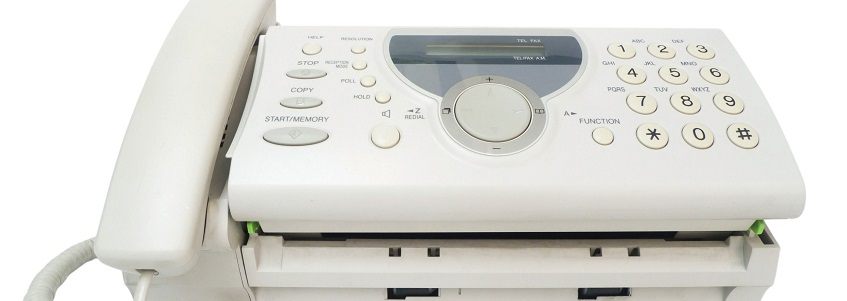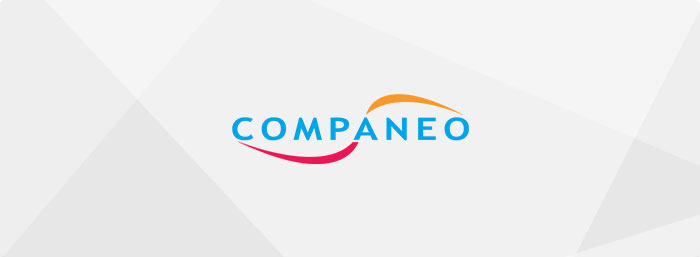

Copiers and printers: Choosing a fax machine in 2025
If at least in the UK, fax machines are becoming a rarity, some businesses still need the convenience of a dedicated device for sending and receiving faxes. But the introduction of multifunction printers which can just do that, and many other things as well, has made a deep impact on the market.
Understanding how these machines work helps understanding why they might still be needed in 2021.
So what are these reasons why standalone, dedicated faxes can still be recommended today? What are the main factors to look into when selecting a fax machine? And once a model is chosen, is it better to lease or buy the hardware?
Understanding: what a fax machine is, and how it works
Principles of fax machines are now commonly understood, but it’s important to understand some details which can make all the difference when comparing different models.
Fax machines: a definition
Fax (short form of the modern Latin compounded word facsimile, meaning faithful copy) machines or faxes are devices used to send or receive images of scanned documents over traditional phone lines.
The main difference between fax machines and older machines used to send and reproduce documents over the phone line network is that faxes can send just any image, not only typed text like telex machines do or telegraphed messages like the first machines of this kind did.
Over than the technological edge this country’s industry had in electronics at the time, there is a logical reason why modern fax machines were invented in Japan. As the Japanese language uses four different sets of characters and thousands of ideograms, telexes, which required the use of a typewriter, were definitely not an ideal solution!
How fax machines work
Faxes digitise texts or images and transmit them as an electronic succession of ones and zeroes via a simple telephone line. The receiving unit reads the incoming data and translates the zeroes and ones into dots again, thus reproducing the original document.
Three elements are necessary: an optical scanner to digitize documents, a telephone line to transmit data, and a printer to reproduce the documents. Most of the time, fax printers use thermal paper, but high-end models can use regular printer paper.
Entry-level machines need to be fed the documents to send one by one. Once the text or images have been digitised, the receiving machine’s number is dialled, and transfer is nearly immediate. Received documents are printed in an instant. It should be noted that a landline phone and a fax can share the same line, but not simultaneously.
Three different types of printing technologies are currently used by faxes:
- Ribbon transfer machines or thermal printer faxes, which require the use of a dedicated type of paper rolls,
- Inkjet machines, which can use just about any type of paper in sheets, just like...
- ...laser machines.

Evaluating: advantages and disadvantages of standalone fax machines
The first question an interested buyer should ask himself is if he or she really needs a fax. Even though using a standalone fax in 2021 still makes sense for a series of reasons, many alternatives now exist.
The case for standalone fax machines
Standalone faxes still bring a number of benefits to the business user:
- They are simple to use and productive, with their paper rolls or large paper trays allowing months of operational activity,
- They are cost-efficient machines with a limited price for the hardware, starting at around £60, up to nearly £300 for high-end models, cheap ink supplies, and very limited impact on the phone bill,
- Thermal paper comes in rolls, which means only the length needed is used,
- Thermal impression has become much more silent and much quicker,
- A standalone device can be used to send or receive faxed immediately anytime, when multifunction machines may be busy doing printing or scanning jobs for other users,
- Last but not least, a fax doesn’t rely on the internet to send or receive faxes – it might then be the last machine allowing communication of documents to and from the outside world when there’s an internet outage!
Disadvantages and alternatives
However, disadvantages of faxes can no longer be ignored:
- Sending a fax is still much slower than sending an e-mail,
- Thermal paper tends to turn yellowish after a period of time, so documents which need to be filed should be photocopied on proper paper,
- Image definition is very poor as only black is printed, with no half-tones,
- At a time when legacy landlines are being quickly replaced by VOIP, sending faxes over digital lines may have unpredictable results – some machines may not support the sending and receiving of faxes over VOIP at all.
Most importantly, modern alternatives have appeared, which may make the use of standalone faxes, which by definition, only fax, irrelevant:
- Of course, using a multi-function printer (MFP) or office copier to scan documents and send them via an internet connection is nowadays the way most texts and images are transmitted. It’s quicker, fairly simple, and offers better resolution and transmission speeds. Most of the time now, sending faxes with MFPs or office copiers is possible without having to start a connected computer.
- Multifunction printers with no fax or no connection to a traditional phone line, but a connection to the internet can send scanned documents as e-mails completely independently from a computer, which is very much like sending a fax and even faster.
- Online fax is another new alternative using the internet to transfer images and converts analogue signals to digital signals and vice-versa, so computers can communicate with traditional faxes. Faxes are sent to phone numbers transformed into e-mail addresses by the service provider, and faxes received are converted to e-mails. These systems can even be operated through mobile apps.
Comparing: choosing a fax machine
Fax machines can be compared by checking a rather short list of key features including machine type, printing technology, paper capacity and memory.
Machine type
The first factor which should be taken into account to compare fax machines should be the type of fax.
Three kinds of machines can be used to send or receive faxes:
- Standalone faxes are the cheapest option, with the smallest form-factor,
- 4-in1 multifunction printers, which are at the same time a scanner, a printer, a copier and a fax machine and which can still fit on a desk – these can use inkjet or laser printing technologies,
- Office copiers routinely include a fax machine and bring the same additional features as a multifunction printer, which much faster printing speeds and lower cost-per-page but are much bigger machines – these almost always use laser printing technology.
Printing technology
As mentioned above, there are three categories of faxes based on the printing technology used.
Each type is more suitable to a different set of needs, and the following three types are presented by ascending price order:
- Thermal printer faxes are best for occasional use, as machines are cheap, slow, and cost-per-page high,
- Inkjet machines are best for moderate business use (less than 400 pages received per month) as they provide better print resolution,
- Laser machines for heavy use, which bring the best print quality and lowest cost per page.
Paper capacity
It’s always awkward and impractical to have to get new sheets of paper to be able to see the end of a faxed document.
The capacity of the paper tray is therefore a key feature of faxes, with best fax machines containing up to 250 blank pages, or even more in the case of an office copier used as a fax.
In the case of faxes using paper rolls, the maximum length of paper rolls supported is the corresponding specification to check.
Paper capacity also concerns the capacity of the document feeder, so that users may not have to feed a long document which has to be faxed page-by-page.
Finally, another feature related to paper capacity is paper handling, as no one wants to take emergency action against paper jams when receiving important documents.
Memory
Memory capacity is closely related to paper capacity as internal memory also sets the limit for the number or size of documents received and sent.
This certainly has an impact when complex graphics are sent or received, or when faxes are sent to multiple recipients.
This can also be regarded as a safety feature in case of power outages.
Other key features
Other key features of faxes include:
- Modem speed, which directly impacts transmission speeds, even though most modern machines on the market are now set to the same maximum,
- Security features like password protection of the machine, in order to prevent the sending or receiving or faxes by unauthorised personnel or to monitor use,
- Dialling features like phone book and speed dials,
- A very interesting feature called “broadcasting”, which allows sending of the same fax to a previously entered list of multiple recipients.
Getting the gear: is leasing better than buying?
Like many other pieces of office equipment, faxes can be rented out or leased by specialist B2B suppliers. As it greatly reduces the initial investment needed, this option may be tempting, but is it really relevant?
The case for outright purchase
The first reason why outright purchase of a fax machine would be the most logical choice is that standalone, single-function faxes really don’t cost that much money anymore.
Entry-level thermal printing model prices start at under £60, so there is really no reason to lease the machine at all.
Also, more expensive laser models, instead of being leased, can easily be found on the second hand market, or as refurbished items, greatly minimising the amount of the investment required.
Finally, if a fax-only machine is needed, it might be difficult to find leasing providers, or the number of models available for leasing can be very limited.
The case for leasing
The first immediately understandable advantage of leasing plans is that they greatly minimize initial investment, spreading it over very bearable monthly payments. This is a key advantage to remove the most significant barrier preventing the choice of a big office copier to be used as a fax machine.
However, other advantages are worth mentioning:
- The machine can be purchased for a much discounted price at the end of the plan,
- Flexible contracts allow easy buyout procedures,
- All inclusive packages mean users simply have to pay their bill at the end of the month, as supplies of consumables and maintenance is part of the deal,
- Single bills for hardware and service mean simplified accounting and budget planning.
More information on Copiers and Printers - How do I send a fax? - How does a wireless fax machine work? - How to connect a fax machine? |
Discover the buying guide for Copiers and printers
-
Defining office photocopiers in 2025 – and choosing the right model

-
Getting the best from your multifunction printer

-
Top 5 portable photocopiers and printers in the UK in 2025

-
3D printers: for what types of business?

-
Finding the best small office printers in 2025

-
How do wireless printers and fax machines work?

-
What to look for in a thermal printer

-
Wireless printing is now

-
Small printers for big productivity

-
Wireless printers coming of age

-
Doing it all with multifunction printer-copiers

-
3D printers in action


